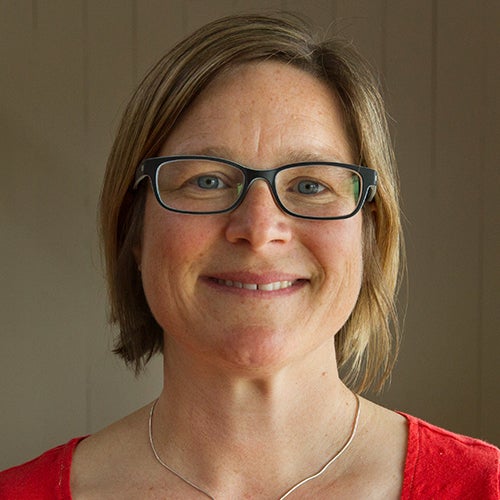- Professor of Oceanography
- Biological Oceanography
- Phone: 401.874.6022
- Email: rynearson@uri.edu
- Office Location: 236 Coastal Institute
- Accepting Students: Ph.D., Post Doc
Biography
Dr. Tatiana Rynearson was impressed with the Graduate School of Oceanography from the moment she arrived for a job interview. “There were school buses outside of this building,” she said referring to the Coastal Institute where her office is now located, “kids were running around and I thought ‘How cool is that?’ ”
There was no doubt that Rynearson, who grew up in land-locked Ohio, had found a professional home by the sea. “I think I knew that I wanted to do something in aquatic science since I was a junior in high school,” she says, noting that she was fascinated by TV shows that showed how complex and interesting the ocean environment really is.
Rynearson was a member of a group of scientists that benefited from the National Science Foundation Advance program, designed to give young women scientists meaningful support in launching their careers.
Besides the school children running all over the place, GSO was fascinating to her because it had a philosophy to promote innovative science. “Look what is here,” she says, listing the Coastal Resources Center, Sea Grant, Office of Marine Programs, and the Metcalf Institute for Marine and Environmental Reporting. The latter organization is a special part of her professional life.
Rynearson’s research is focused around plankton diversity and abundance.
“One group that I study a lot is diatoms. Every fifth breath of oxygen that we take is generated by diatoms. So clearly we need to understand what drives their distribution, why they are so important now, how they might change, and how they can influence major oceanic events.”
One of her projects in Narragansett Bay looks at the diversity of diatoms. “One of the really cool things is the ability to pick apart what is going on inside the diatoms. The genetic methods we have allow us to look inside the cell and see their circuitry, which ones are on and which ones are turned off.” In another project, Rynearson and one of her graduate students undertook gathered diatom samples from all over the world, subject them to DNA fingerprinting, and determine their relationships with one another, thousands of miles away. Rather than traveling themselves, they decided to ask oceanographic institutions to send them samples. “We called it FedEx sampling. We have samples collected on the very same day from all over the world. That’s something you would never get on a ship and it gave us a snapshot of genetic diversity over time. It almost allows us to see evolution in action. You tend to think of evolution as some old and static thing. But diatoms are evolving as we speak—microevolution is the technical term. Most oceanographers are ecologists and not evolutionists—microevolution is like a zipper between the two fields,” she says noting that knowledge of microevolution is necessary for finding out how the diatoms will change with climate change.
One of Rynearson’s passions is her involvement with the GSO-based Metcalf Institute. The institute was set up to improve science communication to the public and runs annual workshops and other programs to help journalists communicate science. It also has programs that coach scientists on how to communicate their science to journalists. Rynearson sits on the Metcalf advisory board and her position is science co-director, an unpaid position. “I’m learning a lot from journalists—how to communicate, how to run labs the journalists want to participate in.” The annual workshop brings in several journalists from different media and from all over the world for a one-week immersion with GSO scientists. Many young journalists are often in a panic when it comes to reporting science. “I think the workshop transforms their ability to report on environmental and science issues and the biggest thing is not necessarily the exact knowledge of science they learn but the confidence they get. They seem to exude this confidence afterwards—‘I can do this.’ And to me that is huge.” The workshop, she adds, gives the journalists a confidence to ask the tough questions and to not be shy about asking for clarification. “Being science co-director has been one of my favorite outreach activities and allows me to step outside of my lab.”
If someone or some organization would offer her a substantial amount of funding, Rynearson said she would cruise to the regions of the ocean that are most sensitive to climate change. “I would make a real effort to better understand the biodiversity of what we call threatened ecosystems and endeavor to study how those systems are being changed.” That may not be out of the realm of possibility, she notes, because so far she has been very fortunate in garnering funding.
Research
- Algal blooms
- Biology
- Climate change
- Coastal and estuarine health
- Diatom ecology
- Ecosystem dynamics
- Genomics
- Microbial ecology
- Molecular ecology
- Ocean acidification
- Physiology
- Plankton ecology
- Plankton genetic diversity
- Science communication
Education
- Ph.D., University of Washington, 2003
- B.S., Brown University, 1994

